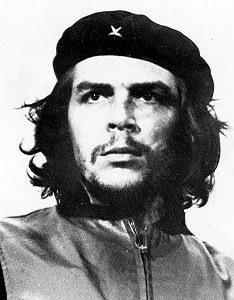
/
RSS Feed
¿Alguna vez has escuchado el uso de “elle” para referiense a una persona? Los pronombres típicamente usados en el español son “él” y “ella” para referir a alguien que se identifica como hombre o mujer. Pero existe el pronombre “elle”, que se usa cuando uno refiere a una persona no binaria.
En este podcast, vamos a escuchar a hablantes nativos del español que están puestos en situaciones en que tienen que manejar los pronombres de la gente no binaria, algo que no necesariamente saben hacer muchos hablantes nativos de la lengua. Vemos si los hablantes los incorporan, los omiten o usan el nombre para navegar el tema de una persona no binaria.
Escucha para averiguar si nuestros participantes conocen el uso de” elle” o de otras formas para referirse a una persona no binaria, o si saben intercambiar las palabras para acomodarse a los pronombres preferidos de esa persona. ¿Piensas que la población hispanohablante está familiarizada con el pronombre “elle”, que va en contra de las normas femeninas/masculinas de la lengua?
Referencias
Dickinson-Land, P. (2020, November 5). Latinx: Una discusión sobre el género y la gentrificación. StMU Research Scholars. https://stmuscholars.org/latinx-un-discusion-sobre-genero-y-gentrificacion/
Granzino, M. (2022, August 23). ¿Elles? ¿elle? Los pronombres no binarios y su no-aceptación por la RAE. RTVE. https://www.rtve.es/playz/20220823/elleselle-pronombres-no-binarios-rae/2390402.shtml
Guerrero, B., Ojeda, D., & Castellanos, L. Á. (n.d.). Pronombre neutro “elle” e identidades no-binaries: Conoce la historia de Lino Fernández. It Gets Better México. https://itgetsbetter.org/mexico/blog/lesson/pronombres/
Kluge, B. (2020). Las formas de tratamiento pronominal. In M. E. Placencia & X. A. Padilla (Eds.), Guía práctica de pragmática del español (pp. 61-69). Routledge.
La Redacción. (2021, August 31). Le preguntan a la RAE sobre el uso de “elle” y “personas no binarias” y esto respondió. Proceso. https://www.proceso.com.mx/nacional/2021/8/31/le-preguntan-la-rae-sobre-el-uso-de-elle-personas-no-binarias-esto-respondio-270997.html
Visée, V. (2022). El uso del pronombre neutro elle y de la terminación neutra”-e” en español contemporáneo [Master’s thesis]. L’Université de Liège.



3 comments
mcordero3
En este grabación están hablando de el pronombre “Elle” y cuando los usas. Dicen que no estas limitada usar nomas “ella” y “el” que son femenina y masculino. Para lost personas que identifican con el categoría non binario puedes respetar a la persona y usar “elle”. Me gusta que platican en cómo puedes preguntar para la respuesta para saber cuál pro nombre es propia. Aveces tenemos miedo a preguntar pero es más mejor a preguntar algo que a usted va siente un pco incomodo de que hablar mal porque esa situación es mas incomodo.
Gabriella Parra
Este podcast es muy interesante, especialmente porque mi lengua nativa es inglés. Es muy fácil in inglés para hablar sobre una persona no binaria. Solamente usa la palabra “they”. No conjugación es necesario. Para mi, es intuitivo para uso “they” en inglés cuando no conozco los pronombres de una persona. Pero en español, es muy difícil especialmente para personas que no usa mucho español.
Polina Protozanova
¡Hola, Melyna y Camila! Gracias por su podcast, era muy interesante y oportuno: nunca he pensado sobre los pronombres en español. Su tema es especialmente fascinante porque en ingles los pronombres para una persona no binaria son “they/them” y la traducción directa es “ellos” o “ellas.” Sin embargo, en español, los pronombres reflejan género por eso “ello” o “ella” son inútiles para una persona no binaria. “Elle” es una opción incluyente. ¡Fascinante!